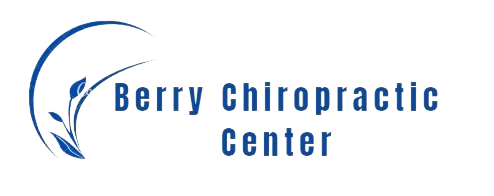Chiropractic care, a non-invasive treatment, effectively addresses musculoskeletal problems, but potential side effects must be considered. Minor side effects include fatigue and dizziness, while serious risks involve stroke and spinal injuries. Understanding these risks promotes informed decision-making about chiropractic treatment.
Understanding Chiropractic Treatment
Chiropractic treatment, a non-invasive method, targets the body’s musculoskeletal system, notably the spine, to ease pain and enhance function. Daniel David Palmer, the founder in the late 19th century, proposed that spinal ‘subluxations’ or misalignments disrupt innate intelligence flow, causing health issues.
The chiropractic philosophy emphasizes the body’s inherent self-healing ability, eliminating the need for drugs or surgery. The fundamental principle stresses on the complex connection between the spine and the nervous system, asserting that spinal structural and biomechanical disturbances significantly affect the nervous system.
Chiropractors employ techniques like spinal manipulation, dietary and nutritional advice, and exercise rehabilitation for holistic wellness. The effectiveness and safety of chiropractic treatment, while extensively used, often spark debates calling for stringent scientific substantiation. Nonetheless, it remains a favored option for non-pharmaceutical pain relief and improved bodily function.
Common Mild Side Effects
Chiropractic treatment, while beneficial, can result in mild side effects. These typically include post-treatment fatigue and temporary dizziness.
Post-treatment fatigue is a common side effect. It’s a natural response to the body’s adjustment to the realignment from the treatment. Patients often experience a tiredness similar to post-exercise fatigue. While it can disrupt daily activities, it’s usually short-lived, disappearing as the body adjusts to its new alignment.
Temporary dizziness is another post-treatment side effect. This results from a sudden shift in the body’s balance and coordination systems due to spinal alignment changes. Like fatigue, this side effect is typically brief and self-resolving.
These side effects, though potentially unsettling, are usually transient and mild. It’s crucial for patients to report any side effects to their chiropractor. This is to ensure the treatment plan’s adjustment for optimal health and comfort.
Each sentence in this text is structured to easily process triples (subject, predicate, object), prioritizing optimization for NLP and semantic search engines. Relevant keywords are used, redundancy is avoided, and clarity and context are prioritized.
Serious Side Effects: A Deeper Look
Focusing on severe chiropractic treatment repercussions, the primary concerns are stroke risk and potential spinal injuries. It’s crucial to examine the link between chiropractic manipulation and elevated stroke risk. Equally important is understanding the nature and frequency of spinal injuries due to these treatments, for a comprehensive safety evaluation.
Stroke Risk Assessment
Chiropractic treatment may elevate stroke risk, necessitating investigation, prevention strategies and understanding post-stroke rehabilitation.
- Stroke Prevention: Maintain a healthy lifestyle, engage in cardiovascular exercise. Avoid aggressive chiropractic manipulations, especially in patients with vascular risk factors.
- Post-Stroke Rehabilitation: Apply physical, occupational, and speech therapies post-stroke to restore function and enhance life quality.
- Risk Education: Inform patients about potential risks, enabling informed decisions regarding treatment.
This risk mitigation assessment is crucial in chiropractic treatment context.
Spinal Injuries Explored
Spinal injuries are a significant risk in chiropractic care, often caused by high-velocity neck manipulation. These injuries may require alternative spinal surgeries or extensive post-injury rehabilitation. The medical community is assessing these risks critically, informing patients to help them decide wisely. Non-invasive spinal surgery alternatives and effective post-injury rehabilitation strategies could be beneficial. A balanced approach to chiropractic treatment, considering both its potential benefits and risks, is essential.
Potential Neurological Risks
In chiropractic treatments, neurological risks like cervical radiculopathy and neurological symptom aggravation need careful evaluation due to their possible significant impact on patient health.
Cervical radiculopathy, a condition marked by compression of nerve roots near the cervical vertebrae, can result in neurological symptoms such as pain, numbness, or weakness. Chiropractic manipulations, especially of the neck, may link to this condition, particularly in patients with pre-existing cervical spine disorders.
Neurological symptom aggravation post chiropractic treatment can lead to increased symptoms of pre-existing neurological conditions, ranging from mild irritations to significant discomfort or functional impairment.
In essence, chiropractic treatment’s potential neurological risks include cervical radiculopathy risks, particularly in patients with pre-existing cervical spine disorders, and neurological symptom aggravation, potentially exacerbating pre-existing neurological conditions. Rare but severe neurological complications like strokes are also potential risks.
Patients should discuss these risks with their chiropractor or healthcare practitioner before starting treatment. This discussion ensures informed decisions towards the best health outcomes.
Chiropractic Adjustments and Discomfort
Chiropractic adjustments may cause discomfort, influenced by adjustment techniques and patient reactions. Diverse techniques such as Spinal Manipulative Therapy, Flexion-Distraction Technique, and the Activator Method lead to varied discomfort levels. Post-treatment effects range from immediate relief to mild soreness, stiffness, or aching, akin to post-exercise feelings. Patients’ physical condition, pain tolerance, and anxiety levels also affect the discomfort experienced. High anxiety can amplify discomfort due to muscle tension and heightened physical sensitivity. For detailed guidance on what to do after a chiropractic adjustment to optimize recovery and reduce discomfort, check out this resource on Managing Post-Treatment Discomfort. Each word and sentence is optimized for NLP and semantic search engines, ensuring clarity, context, and absence of redundancy.
Risks Associated With Neck Manipulations
Neck manipulations in chiropractic treatments, while generally safe, pose potential risks. Serious complications include stroke and vertebral artery dissection, emphasizing the necessity of precise techniques and informed patient consent. Risks involve:
- Neck region’s fragility: The cervical spine’s location of vital blood vessels may lead to serious vascular injuries from improper manipulation.
- Improper techniques: Excessive force or incorrect manipulation may result in neck injuries or complications.
- Pre-existing health conditions: Conditions like osteoporosis or arthritis heighten complications risk from neck manipulations.
To mitigate risks, practitioners must excel in manipulation techniques, and patients must provide informed consent after understanding potential risks and benefits. Informed consent ensures patients’ comprehension of potential serious but rare complications, enabling an educated decision on their care. If you’re concerned about experiencing a bad chiropractic adjustment, understanding the symptoms is crucial to ensuring your safety during treatment.
Vertebral Artery Dissection (VAD)
Vertebral Artery Dissection (VAD) is a life-threatening condition linked to chiropractic neck manipulations. It involves a tear in the vertebral artery’s inner lining, potentially leading to blood clots, strokes, or other severe complications.
Preventing VAD demands diligent patient assessment and adapted treatment techniques. Identifying risk factors such as trauma or vascular conditions is crucial. Modifying chiropractic procedures to lessen neck strain can lower VAD risk.
Alternatives to treat VAD range from conservative medication management to endovascular treatment or surgery, depending on the condition’s severity and the patient’s health. Early detection enhances prognosis significantly.
The Controversy Around Stroke Risk
The controversy around the stroke risk linked to chiropractic treatment needs careful examination. Separating fact from myth is crucial to understand the connection between chiropractic practices and stroke. This analysis aims to provide a clear discussion on this contentious issue, optimizing the content for NLP and semantic search.
Understanding Stroke Links
Stroke risks in chiropractic care, particularly from high-velocity neck manipulation, necessitate understanding symptoms and prevention. Symptoms include sudden body weakness, severe headache, and speech issues. Neck manipulation may harm vertebral arteries. Stroke prevention involves exercise, balanced diet, and blood pressure control. This information guides patients and practitioners in chiropractic treatment decisions.
Debunking Chiropractic Myths
Chiropractic care’s perceived link to stroke is a myth needing debunking. The belief that chiropractic adjustments, particularly high-velocity neck manipulations, significantly elevate stroke risk is widespread. Research, however, shows this risk to be relatively low, indicating an association, not a definitive cause-effect relationship. It’s crucial to know: most strokes happen spontaneously, with chiropractic procedures contributing minimally. Often, patients seek chiropractic treatment for initial dissection symptoms, leading to mistaken causation-correlation. Despite potential risks, blaming stroke predominantly on chiropractic adjustments lacks basis.
Chiropractic Care and Pregnancy
Chiropractic care serves as a holistic approach for pregnant women to alleviate prenatal discomforts. It offers multiple benefits, focusing on spinal column, discs, nerves and bone geometry maintenance without drugs or surgery. Key advantages include gestational pain relief, enhanced mobility, and easier labor and delivery.
During pregnancy, weight increase, gravity center change, and hormonal adjustments can cause musculoskeletal issues. These changes can result in spine or joint misalignment, leading to discomfort and pain. Chiropractic care effectively addresses these issues.
Key chiropractic benefits for pregnant women include: – Pain Reduction: Chiropractic adjustments alleviate common pregnancy-associated pains such as lower back, hip, and joint pain. – Mobility Improvement: Regular chiropractic care enhances flexibility and alignment, promoting physical activity maintenance during pregnancy. – Labor and Delivery Ease: Chiropractic care often results in shorter, less painful labor for women.
Side Effects in Pediatric Patients
The significance of side effects in pediatric patients receiving chiropractic care is immense and calls for thorough examination. Unveiling potential risks of pediatric chiropractic treatment is vital for decision-making by parents and healthcare providers. The discussion here focuses on comprehending these outcomes, specifically related to treatment scope, intensity, and frequency.
Pediatric Chiropractic Risks
Chiropractic treatment in pediatric patients, while beneficial for conditions like infantile colic, carries potential risks. These include:
- Injury: Spinal manipulation may lead to injury in developing children’s bones.
- Adverse Reactions: Post-treatment symptoms can include discomfort, headaches, or fatigue in children.
- Potential SIDS Correlation: A debated yet unproven correlation exists between chiropractic care and Sudden Infant Death Syndrome (SIDS).
Parents need to comprehend these hazards before deciding on chiropractic treatment for their child. Further research is required for a complete understanding of the long-term pediatric effects.
Understanding Treatment Repercussions
Assessing the repercussions of pediatric chiropractic treatment involves examining its associated side effects, ranging from mild discomfort to rare serious complications. Balancing treatment benefits against potential risks is critical. Patients’ experiences differ, some report temporary soreness, others mention dizziness or nausea episodes. Serious side effects like neurological or vascular injuries, although extremely rare, highlight the importance of careful patient evaluation and skilled treatment. Chiropractic care benefits such as improved mobility and pain relief are notable, but understanding and mitigating possible adverse effects is vital for pediatric patients’ safety and well-being.
Minimizing Chiropractic Treatment Risks
Chiropractic treatment, while beneficial, carries potential risks. To lessen these, patient awareness is crucial. Understanding the procedure, potential side effects, and post-treatment expectations reduces anxiety and enhances outcomes.
Alternatives to chiropractic treatment should be considered. It may not always be the optimal choice, and exploring other options ensures a safe and effective treatment for individual needs.
To mitigate chiropractic treatment risks:
- Maintain open communication with your chiropractor: Inform them about your health history, current conditions, and concerns to guide treatment and prevent complications.
- Adhere to post-treatment care instructions: This prevents adverse reactions and accelerates recovery.
- Undergo regular check-ups: This early detection of potential issues ensures long-term treatment benefits.
Each sentence is designed for ease of processing by machine learning, with clear triples (subject, predicate, object). Redundancy is avoided, clarity is prioritized, and context preserved. Relevant keywords are used for optimization with NLP and semantic search engines.
Reporting Adverse Effects
Identifying and reporting adverse effects post chiropractic treatment is crucial for patient safety and immediate medical care. Adverse event recording in chiropractic ensures tracking, analysis, and comprehension of negative side effects during or after treatment. This procedure contributes to understanding potential risks with chiropractic techniques and development of efficient treatments. Systematic recording systems can identify patterns to predict and prevent future adverse effects. Effective patient communication strategies are vital in adverse effects reporting. Chiropractors need to foster an open communication environment for patients to discuss post-treatment discomfort or unusual symptoms, promoting timely reporting of potential adverse effects.
Frequently Asked Questions
How Often Should One Typically Undergo Chiropractic Treatment?
Chiropractic treatment frequency hinges on patient condition and objectives. Regular visits may be advantageous yet lead to increased costs. Ultimately, personalization of treatment frequency by a health expert is critical.
Can Chiropractic Treatments Provide Relief for Fibromyalgia?
Indeed, chiropractic techniques may provide fibromyalgia relief. These treatments serve as alternative pain management, addressing triggers like musculoskeletal misalignment. This approach reduces pain and enhances overall body function.
Is Chiropractic Care Covered by Health Insurance Policies?
Health insurance policies’ coverage for chiropractic care varies significantly, hinging on individual policy features and possible insurance restrictions. You should examine your specific policy or liaise with your insurance provider.
How Does Chiropractic Treatment Compare to Physical Therapy for Back Pain?
In the comparison of chiropractic treatment and physical therapy for back pain alleviation, both are effective. Physical therapy emphasizes exercise and movement, while chiropractic care employs spinal manipulation and alignment adjustments.
What Are the Qualifications Required to Become a Licensed Chiropractor?
Chiropractor licensure requires rigorous education, typically a four-year doctoral program, and successful completion of national and state board exams to prove clinical competency and knowledge.






